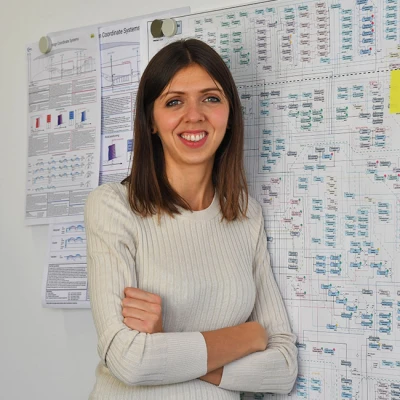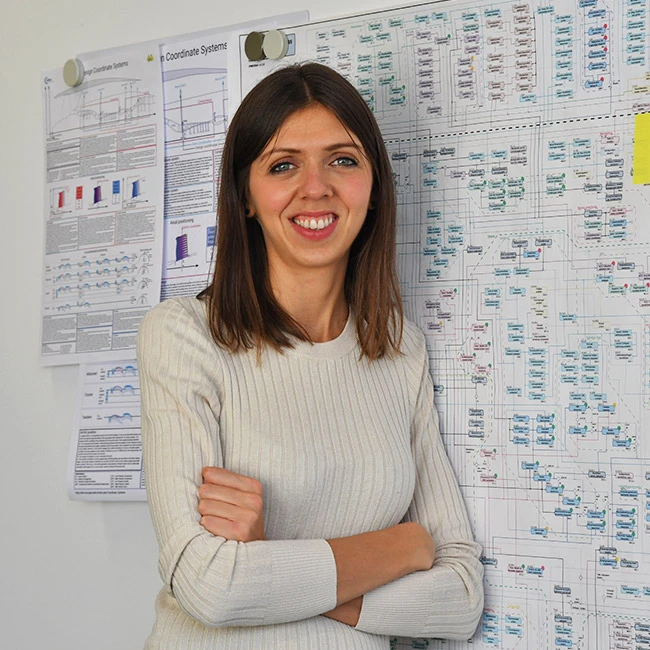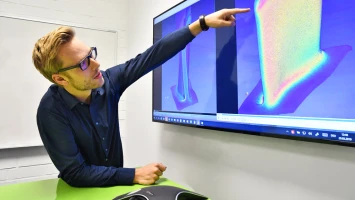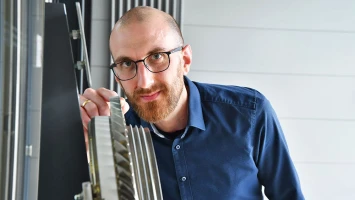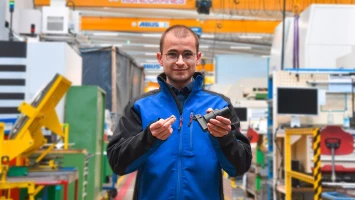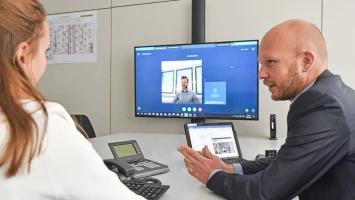people
Talking geometries: A common language for more efficient engine development
Dr. Anna Wawrzinek is working on joint software for the different disciplines of engine development.
author: Thorsten Rienth | 3 mins reading time published on: 01.06.2020
author:
Thorsten Rienth
writes as a freelance journalist for AEROREPORT. In addition to the aerospace industry, his technical writing focuses on rail traffic and the transportation industry.

Dr. Anna Wawrzinek boldly draws a direct line from her work to the original draft of the German Basic Law, which held that “the state is there for the sake of man, not man for the sake of the state.” In her view, the situation with the digital transformation is similar. “It’s not an end in itself, but should help my colleagues focus on what’s important.” For example, on the development of new engines for air transport.
- Using multiphysics simulations to boost efficiency
- A data scientist for the aviation industry of tomorrow
- Digitalization paves the way for predicting tool wear
- Managing digital transformation
- Digital tools help create new, efficient components
- Talking geometries: A common language for more efficient engine development
Depending on the model, an engine is assembled from up to 30,000 individual parts. Together, they create a complex system that works on the basis of action, reaction and mutual influences. The way in which engines are developed is just as complex—representing a finely tuned balance between design parameters, aerodynamics and structural mechanics.
Technological development has now progressed to such an extent that tangible improvements are possible only if the engine is considered as a whole, if cost effectiveness is to be ensured that is. However, the individual disciplines, which have for the most part always considered their (further) developments as separate entities in the past, have built up their own digital development systems over the years. “To put it simply, they work with different coordinate systems,” Wawrzinek explains.
“I’m working on translating the different methods into a kind of interdisciplinary coordinate system.”
That’s where the problem begins that the 33-year-old is looking to solve. She is one of around 20 digital transformation managers at MTU Aero Engines. “I’m working on translating the different methods into a kind of interdisciplinary coordinate system,” she says. This would improve speed and efficiency in the development of engines and engine components—after all, it would save time spent time switching between the different coordinate systems.
After graduating from high school, Wawrzinek, who is originally from Poland, studied mathematics at Freie Universität Berlin. She completed her PhD in a field of research that was still emerging—isogeometric analysis and its transformation into industrial applications. Using isogeometric analysis, mathematicians try to combine the geometric description of design and analysis models by introducing what are known as NURBS (non-uniform rational basis splines) as a common basis to define geometrical shapes. This is a suitable method because NURBS are the basis of most CAD (computer-aided design) systems.
Essentially, the need for a comprehensive solution has grown from a historical development. Wawrzinek explains that when computers slowly made their way into industry in the 1960s, the development of digital tools diverged across disciplines: “The designers continued to work in 2D, which stands to reason. But the analysts needed to work with finer 3D elements, such as point clouds and triangles, so that they could process the components digitally.”
Looking ahead, however, the common MTU development coordinate system for design, aerodynamics and structural mechanics is more of an intermediate goal. The next step is lossless networking and integration of the existing systems for all partners that are significantly involved in engine development, she says. “Then the prevailing trend to consider the engine as a whole at the development level could also be reflected in the software.”



